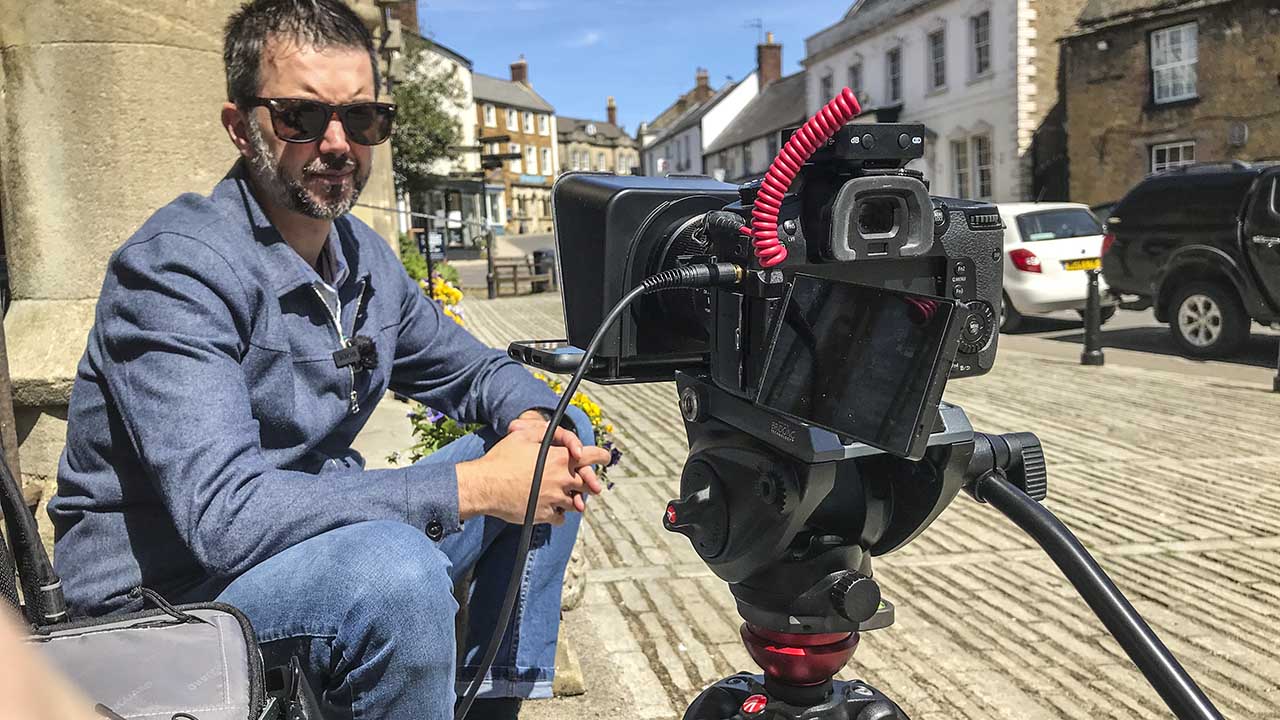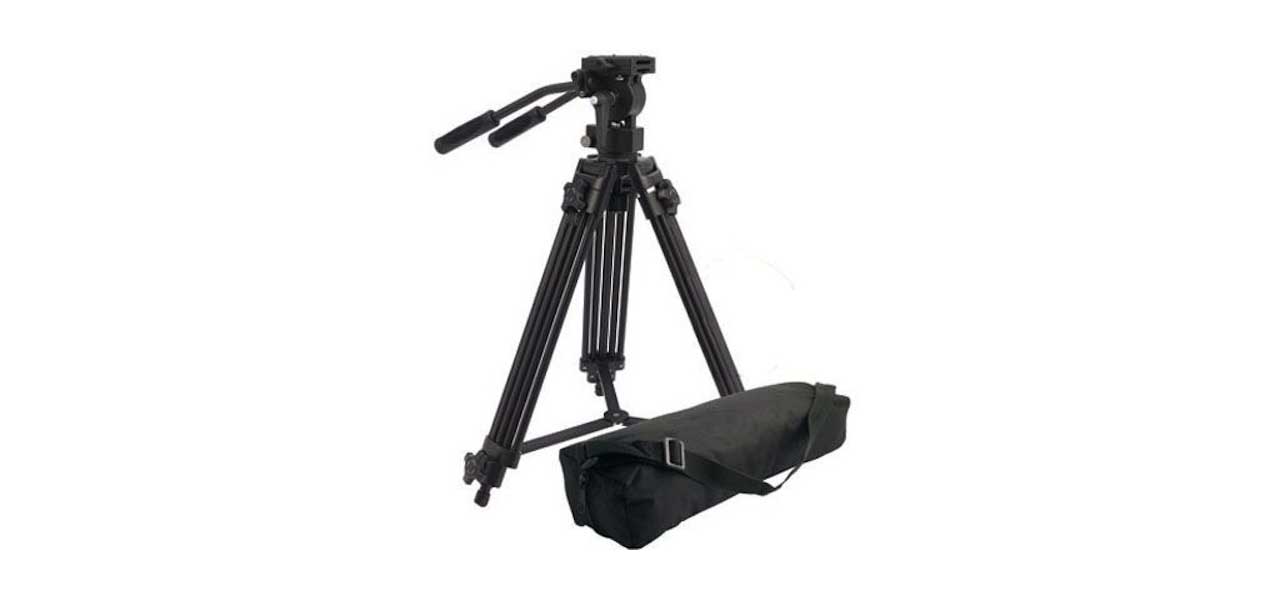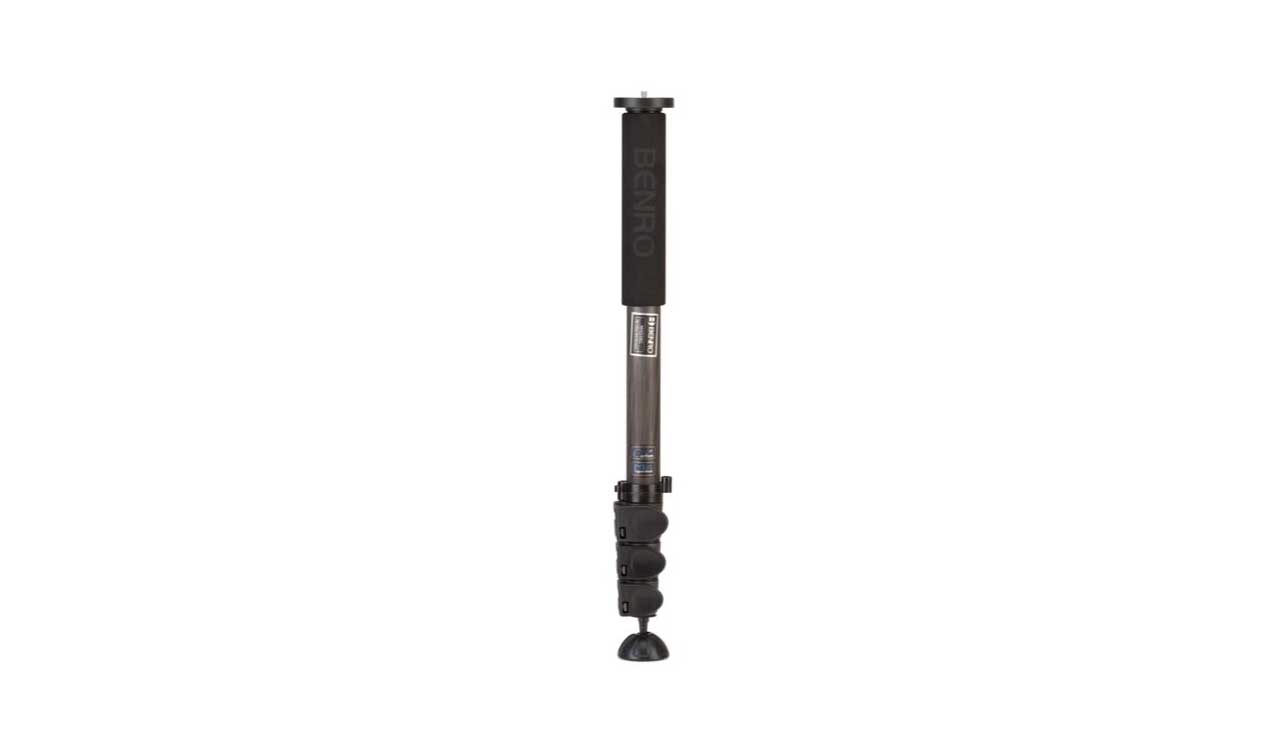In a recent post we outlined when and why you might need a camera support for video shoots to ensure that you get great smooth and steady footage. To take it one step further we explain the advantages of shooting with camera supports and suggest the best tripods for video, and other camera supports to give you more creative shooting options.
What you’ll learn
- Why you should use camera supports for video
- The pros and cons of camera supports
- The creative options camera supports offer
- Our ‘top five’ best supports for shooting videos
- Why a ‘shot list’ will lead you to your perfect purchase
Dipping into your wallet to spend on any camera support – whether it’s a tripod, monopod, slider or shoulder rig – is as important as any video purchase you’ll make. This is because you simply cannot put a price on capturing steady video footage or the creativity that some supports will offer you. With an open mind, and a vivid imagination, camera supports can be incredibly versatile tools that can add extra visual punch to your filmmaking.
The key is you can get all sorts of shots that are full of dynamism with tripods or monopods. To give you a helping hand here we examine the key pros and cons to using camera supports when shooting your videos:
Camera supports for video – pros and cons
Unless you are deliberately shooting ‘run-and-gun’ hand-held video, or want to achieve a creative ‘blurry’ look to your footage, it’s almost inevitable that you’ll need a camera support to help you to shoot your videos.
Video tripods differ from photographic tripods as their legs usually spread wider and are usually even more stable. They are generally larger, more robust, have bigger ‘video heads’ to attach your camera to and usually have spirit levels and some kind of pan and tilt handle. All of these features are designed to keep your camera as steady as possible and vibration-free during any video recording.
The key difference between using a photographic tripod and a video tripod is that when shooting still images you’ll want a camera that stays still whilst for video you’ll want a support that allows your camera to stay steady whilst it moves. For example, for video shoots you may want to pan across a dramatic landscape, track a moving vehicle, or tilt from the top of a mountain to the bottom to give a sense of scale – all of which will require a very steady support.
Some of the video tripod brands to look out for include Benro, Camlink, Geekoto, Manfrotto, Miller and Velbon. The models available will vary greatly in price and specifications – for example, how much weight (aka ‘the payload’) the tripod will support, how robust they are, if they have a quick-release head (which allows you to quickly swap from supported shooting to working hand-held), their maximum extended height, different leg locking options and various other factors.
Monopods are lightweight, easy-to-use and can be very versatile, particularly when they are combined with the in-camera stabilisation systems found in some modern cameras. Monopods are great for when you quickly need to reposition your camera to shoot from a fresh angle and, when collapsed, they can also act as a hand-held stabiliser for your camera.
As a general rule a monopod will allow you to be more mobile than shooting with a tripod, so you need to plan and make sure if it’s a tripod or a monopod that’s the best fit for your shooting needs.
It’s important to be imaginative for your video shoots, so just don’t think that a monopod should be placed on the ground to just stand straight up. Consider holding your monopod high above your head to capture a crowd scene from above or why not flip it so your camera is close to the ground to give the feeling of the point of view of a child or an animal?
The major monopod brands include 3 Legged Thing, Benro, Digiant, Gitzo, Joby, Manfrotto, Sirui and many others. They will differ in spec in that some may offer more height than others, be more robust or more lightweight in construction, and offer different options for adding video heads.
Other camera support options include counterweighted devices, such as ‘Steadicams’ (it’s a brand but is also acknowledged as describing a type of support), which screw into the tripod socket at the bottom of cameras and use a weight to provide ballast that counteracts and softens any movement in many shooting situations.
The advantage of ‘Steadicams’ is that you can walk almost anywhere with them – for example, tracking players from the side of a sports pitch or following actors walking through a scene. Next time you watch a live football match on TV the chances are the pitch-side camera operators will be using a ‘Steadicam’ of some sort.
It’s actually quite difficult to give an argument against using a camera support for filming. The only counter argument is if you really want to have a film that, for creative reasons, exudes the fact it has been shot hand-held.
One that immediately springs to mind is the original The Blair Witch Project movie, which used the hand-held approach to draw you into the footage, make you feel the scary reality of it and as if you were actually there as well.
How to buy the best camera support for video
When you’re thinking about buying any camera support for shooting video remember to consider ease-of-use, weight, the type of shots you’ll be filming and the amount of creativity you’ll want supports to potentially add to your video footage. For more tips and advice on the key factors to bear in mind when you’re buying any type of camera support to shoot video with check out our tutorial on how to capture stable video footage.
Although many other types of camera supports are available, for the purposes of simplicity this blog outlines the ‘best’ current tripods and monopods for shooting video in terms of quality of specs, affordability, handling and ease-of-use.
Don’t forget that you have many other options and remember to always do your own research to check if your needs and budgets match our recommendations. Anyhow, without further ado, see below for our picks for the best tripods and monopods for video.
Best tripods, monopods and camera supports for video
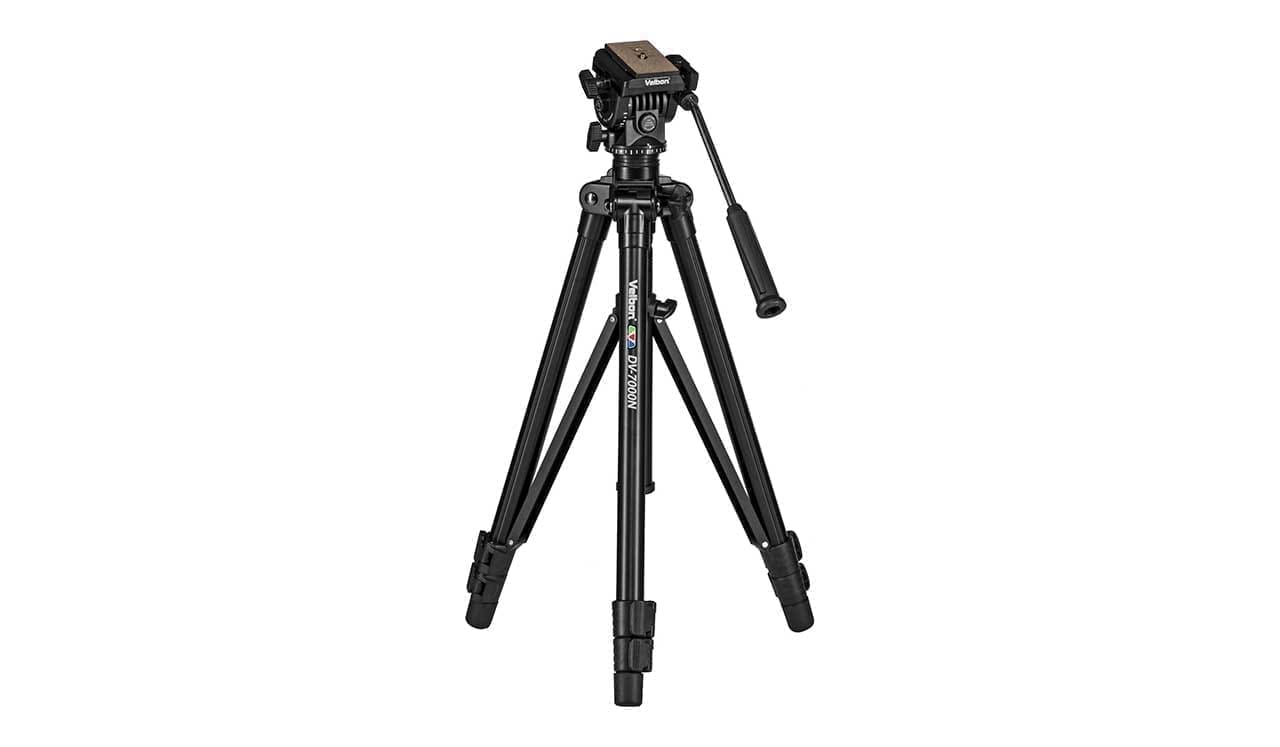
Velbon DV-7000N & PH-368 fluid head
A very good tripod and head choice for less experienced filmmakers, this aluminium model from Velbon will suit those shooting with DSLR or mirrorless camera kits. With a maximum payload of 6kgs its three-section legs can extend up to 162.5cms and then fold down to just 57cms.
It features a built-in spirit level and a quick release platform, which enables you to rapidly take the camera off the support to switch to hand-held shooting. Other standout specs include a long arm on the head with separate pan-and-tilt controls.
It has robust rubber feet for good gripping of surfaces and possibly the only major downside is a bulky 3.47kgs overall weight. Despite that it’s a versatile and affordable tripod/head combo.
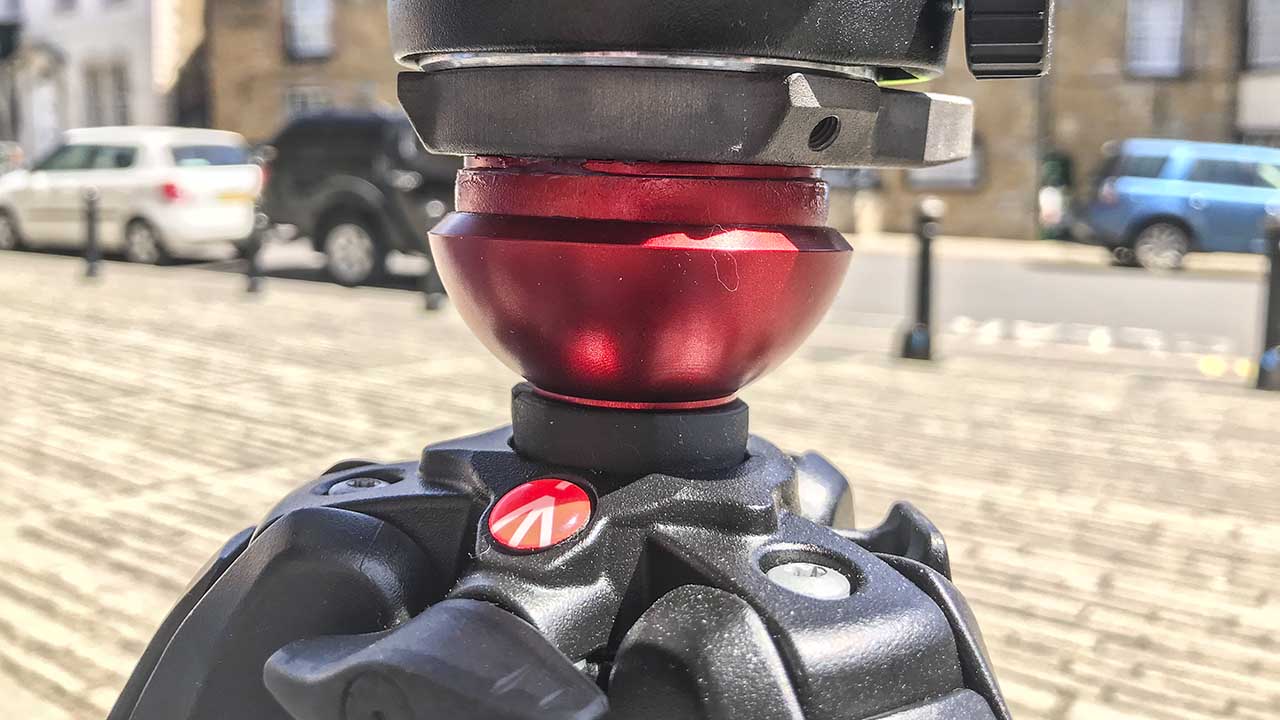
Manfrotto 190X & 500 Video Fluid Head
More of us are shooting video than ever before, and realising this Manfrotto launched the 190X Video. This video tripod takes features and design from both stills and video supports.
The result is a relatively lightweight and ultimately robust video support that performs exceptionally well. The 190 legs are a photographer’s staple, just as Manfrotto’s 500 Video fluid head is to videographers. Bringing the two together is a clever levelling column which replaces the usual centre column.
In use, the tripod performs exceptionally well. The 500 Video head provides smooth fluid movement when needed, and the legs provide strong support. But it’s the column that really brings the kit together and steals the show.
The centre column provides essential levelling and the bubble levels in the head ensure that, although outwardly simple,this video kit will find broad appeal.
Because it all works so well, at its modest price tag there really is little else that can touch it in terms of functionality and quality.
Camlink TP Pro Video Tripod
This beautifully manufactured aluminium model offers super stability thanks to triple-braced legs that are made to deliver increased stability even if you’re shooting on uneven surfaces on location.
It also offers more grip via rubberised feet. It features a video head with dual control handles to help smooth panning and tilting, plus a built-in spirit level and friction-damping features.
Maximum payload is a decent 6kgs but the downsides include a hefty 4.92kgs overall weight and the maximum extended height of 138cms may not be enough for some. Its three-section legs fold down to 73.4cms and whilst it is not perfect this is a highly affordable model with pro-specs.
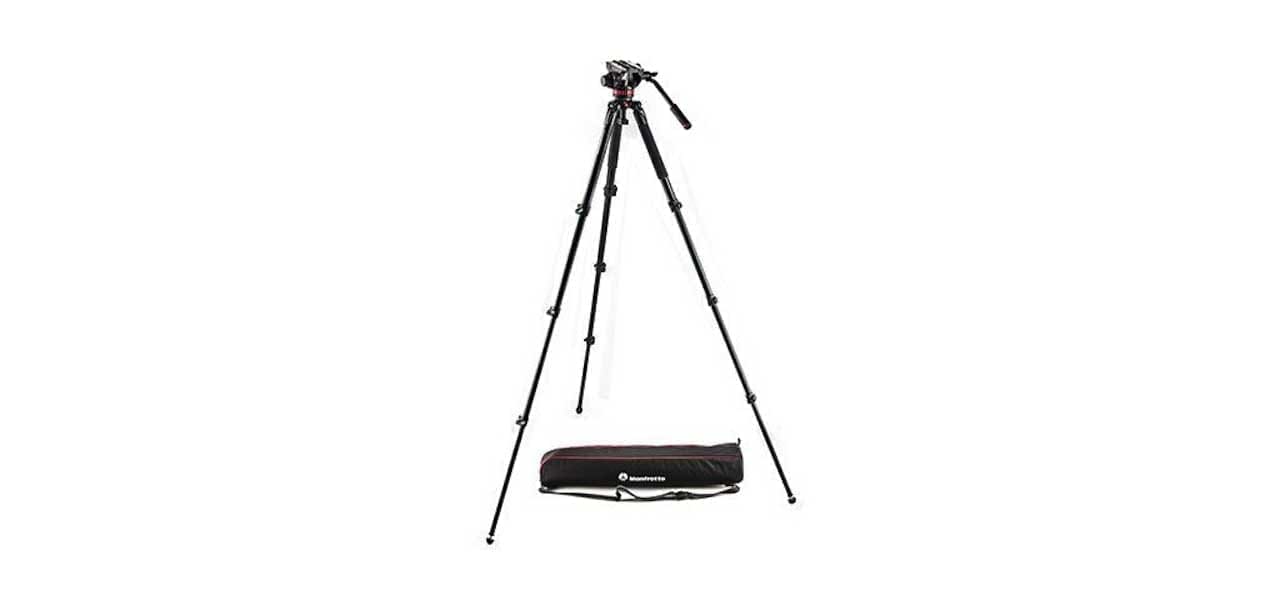
Manfrotto MVK502AQ & MVH502A fluid head
Arguably THE best video tripod kit on the market this tripod and fluid video head combo from Manfrotto can handle a maximum payload of 20kgs, thus making it suitable for everything from a mirrorless camera kit to a pro camcorder.
The four-section legs don’t offer a spreader system but they do make this support quick and easy to set up and break down. It extends to a very useful height of 171cms and folds down to just 59.5cms, whilst weighing in at a fairly hefty 1.8kgs.
It isn’t cheap but does offer a great pan/tilt handle and a fluid head. The tripod’s feet can be changed from spikes to rubberised feet via adjustable covers, thus making it flexible for use both indoor and outdoor shoots. A very good choice for shooting video.
Benro Adventure MAD38C Carbon Fibre Monopod
This carbon fibre monopod is notable for its maximum payload of 16kgs, which should allow for the use of a hefty camera, even if paired with a telephoto/long lens.
It features a round, rubberised, vari-angle foot that maintains stability whilst giving you the scope to shoot at more creative angles. Its four-section leg includes quick-flip locks that allow for fast set-up and breakdown and given its payload it would work well for shooting distant subjects or panning across wide vistas.
This Benro model should be easy to carry as it weighs in at just 0.5kg and packs down to a manageable 52.5cms. It’s well worth considering for its combination of strength and portability.
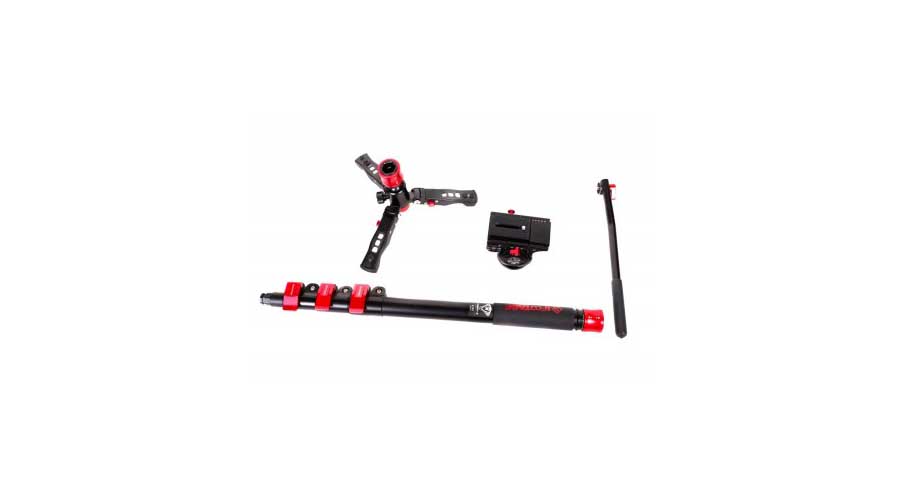
iFootage Cobra 2 A180
The fact that this aluminium monopod extends up to 180cms is a major plus point if you’re planning to shoot when standing up straight. It comes in four sections and is said to have ultra-secure adjustable feet, enough to withstand a top kit payload of 8kgs.
With a solid aluminium construction you’ll be carrying just over 1.5kgs in weight with this monopod in your kitbag but you’ll be getting one of the most solid and stable camera supports currently available. Its packed away length is 70.5cms, so you have to judge if you want the stability it offers against the size and weight of this model.
It’s a very well made support that will suit many of the needs of amateur and pro filmmakers.
The ‘shot list’ is your friend…
Exactly which type of support you choose will depend on what you need to shoot to make your planned film and how much budget you have to ensure that you get those shots. I’d firmly advise you to start with a ‘shot list’ to help make sure that you get the shots you want and you also know exactly what equipment you are going to use to get them.
Aside from listing the shots/scenes you’ll need to shoot the ‘shot list’ for your film should also list in detail what equipment you’ll be using (cameras, lenses, lights, tripods, monopods etc) for each shot to help you to get the best footage.
This will ensure you know exactly what you’re shooting and if, and when, you’ll need any camera supports to shoot your film’s scenes in the smoothest and most creative way possible. It’s a simple solution that can be done with just a pen and paper, but it’s one that’s well worth doing before you buy any camera support.
